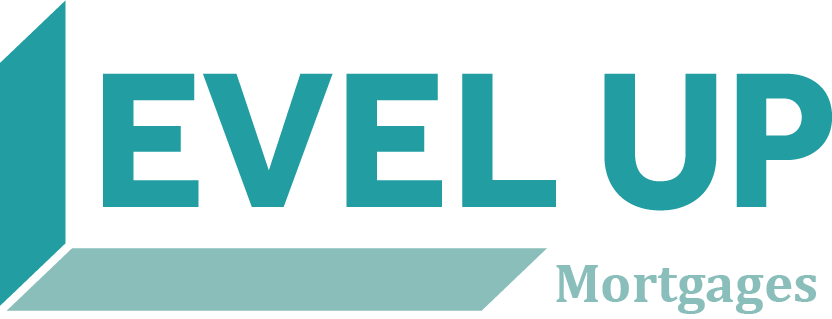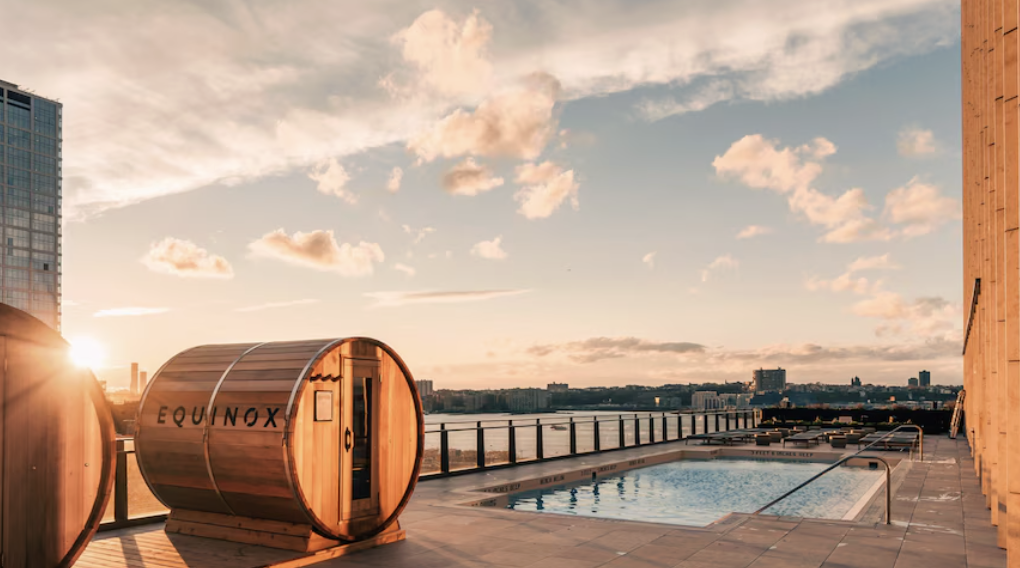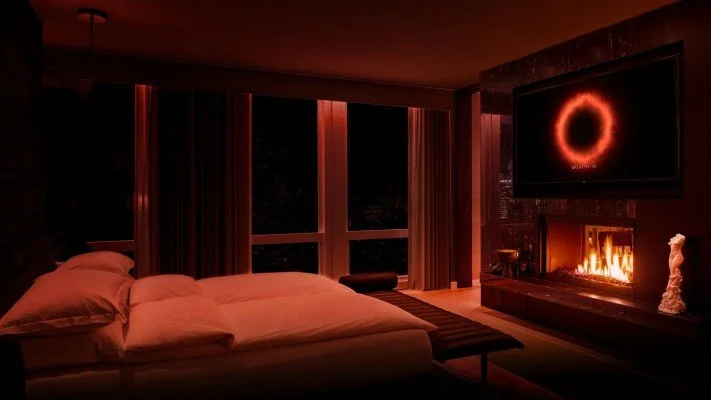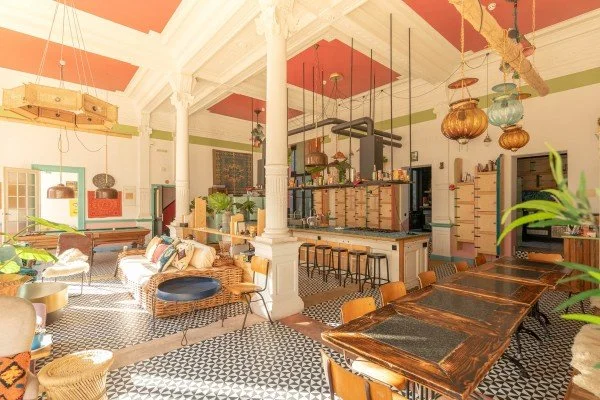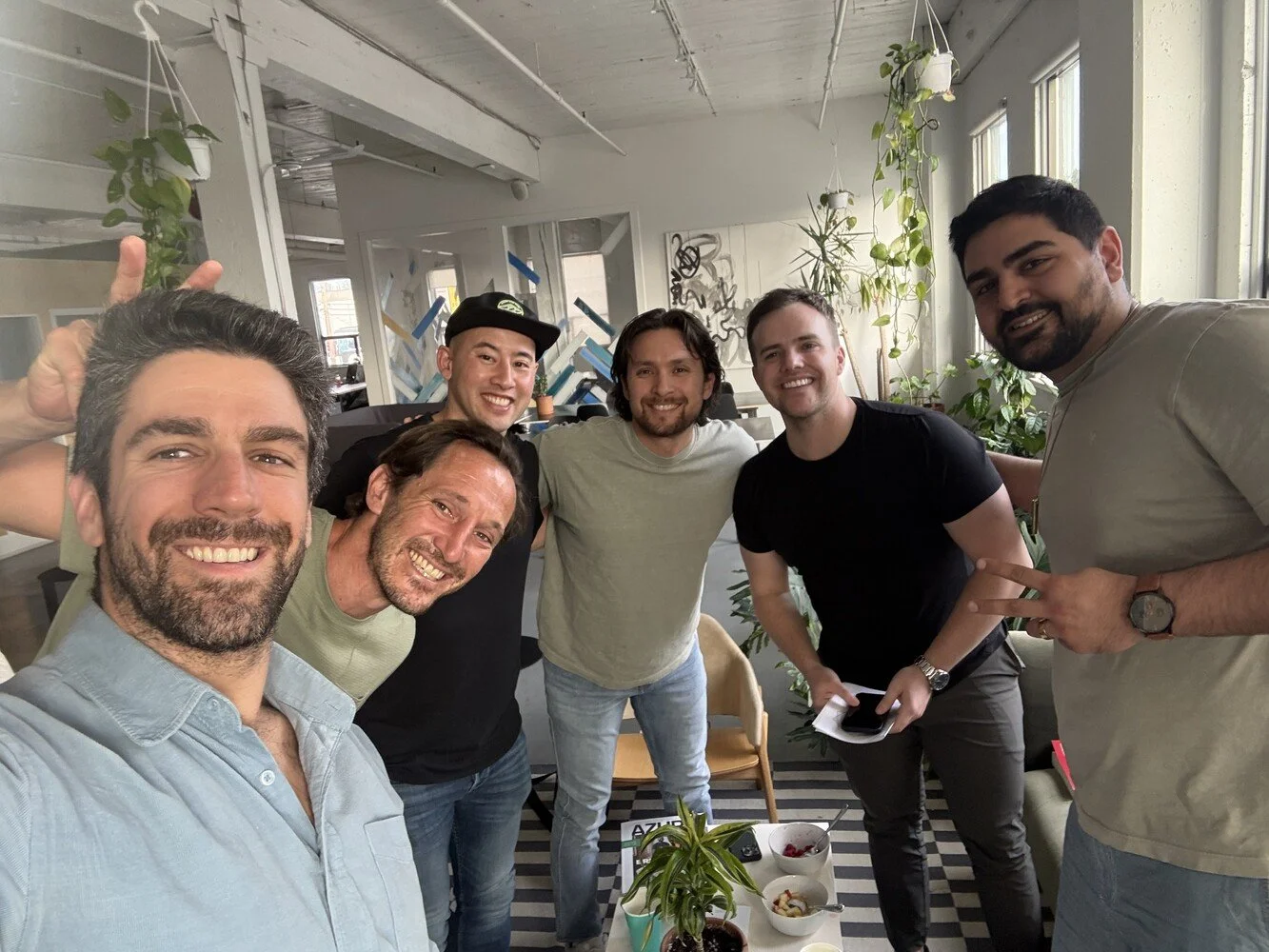Co-Living & Wellness Real Estate: Solutions To The Work-from-Home Trap
The post-pandemic realities of rising wellness priorities, remote work, and housing affordability challenges are here to stay - and unless they converge gracefully, we risk deeper burnout, stronger economic downturns, and an escalating housing crisis.
In Part 1 of this series, we uncovered the quiet, but deeply pervasive, isolation and burnout crisis unfolding behind closed doors for remote workers who work from home (WFH) - the convenience of WFH can be a trap.
The 100 remote worker interviews I conducted this summer revealed the emotional and social costs of WFH even for people living in big cities: rising loneliness (53%), stagnant motivation (78% see inspiring neighbours as essential), and burnout effects caused by a blurring of boundaries between work and life.
While the freedom to work from anywhere was once the dream, it has become clear that "anywhere" isn’t always designed to support your holistic health, focus, or a sense of belonging. After COVID, our homes, originally built for sleeping (not working from home) are now expected to serve as offices, gyms, creative studios, and places of personal growth. Most aren’t keeping up, and as 20% of Canadian workers continue to work remotely, residential living needs to evolve.
Co-living and wellness-focused real estate are emerging as vital responses to the darker side of working from home, using communal spaces and wellness amenities to bring balance back into daily life. They represent a unified model for community and wellbeing that helps people tackle the deeper challenges defining this century, both present and future.
As you read on today for Part 2 of this wellness real estate series, we shift from identifying the psychological problems of Part 1 to potential infrastructural solutions. We will explore current living options for remote workers who value community, wellness, and functional WFH designs.
It all starts with optimizing WFH and its nearby surroundings. The home is the place where we spend nearly 90% of our time, and where, as the Netflix Blue Zones series shows, the path to a healthspan of age 100 can be shaped.
Today we'll look at what it takes to build future-forward homes that meet the new standard remote workers are asking for. Spaces that blend privacy with affordability, ignored amenities with invigorated wellness, and independence with supportive neighbours that help you live your purpose.
Just A Roof Isn’t Enough: Renters Want Wellness Inside and Outside Their Building
Rental life, while flexible, comes with its own strains that are about to snap as people prioritize wellness as a key part of their home life.
In our interviews, a remote designer lamented that she would love to start a garden or create a home gym for wellness, “but as a renter, I can’t invest in those things - I’m stuck with what I get.” This underscores how renters may feel less “at home” in their homes, knowing their stay is temporary or that they can’t fully adapt the space to their wellness needs.
But increasingly, it's not just the unit people care about: it's the potential wellness ecosystem surrounding it. Dozens of interviewees shared they weren’t just looking for more condo square footage or nicer countertops. What they craved was access to nature, natural light, close-by healthy food, and fitness or communal amenities that encourage leaving the apartment. Someone we interviewed shared, “The second I walk into my building, I feel sluggish. There’s no green space, no one says hi, and I just want to get inside and shut the door.”
And this isn’t just a “nice to have.” When people work and live all within a 500-square-foot apartment, the surrounding environment becomes a lifeline. If the building lacks healthy defaults such as a common patio, rooftop garden, or nearby park, it can feel like the walls are starting to close in.
Research backs this up. This article reports that hearing birdsong and living near parks alongside any other green features reduces the risk of depression by around 20%, and increases feelings of well-being.
Think about how nice even just a 10-minute walk in greenery can do you after an exhausting set of Zoom calls. We need this quick reset to show up on time to our next meeting or re-energize for solo work with a refreshed mind.
A Boston University study reported that adults living in highly walkable neighborhoods were 1.5× more likely to engage in adequate physical activity and had 24% lower odds of obesity compared to those in less walkable areas.
What renters are signaling is clear: the future of housing isn’t just about privacy or affordability, it’s about daily access to wellness, built into the bones of the building and the surrounding environment.
Real Estate Wellness Industry: Doubling to $1.1 Trillion by 2029
Stat: Global Wellness Institure | Image: Ziggurat
We’re beginning to see developers respond. Equinox, the luxury fitness club brand, expanded into hospitality with Equinox Hotels - a concept intertwining high-performance wellness with lodging and, now, permanent residences. The flagship Equinox Hotel in New York (opened 2019 in Hudson Yards) was explicitly designed around fitness, recovery, and “intentional living.” It started with hotels and is now extending into branded condo living. And it’s not just one-offs; the wellness real estate sector is exploding.
Equinox NYC
Sleep-optimized suites at Equinox Hotels NYC
The Global Wellness Institute (GWI) defines Wellness Real Estate as “the construction of residential and commercial/institutional (i.e. office, hospitality, mixed-use/multi-family, medical, leisure, etc.) properties that incorporate intentional wellness elements in their design, materials, buildings, amenities, services, and/or programming.” In practice, this refers to homes and buildings intentionally designed to support holistic health, such as apartments with intentional communal areas to promote social interaction, air filtration, fitness zones, meditation spaces, or cold plunges, and any other developer line items that promote movement and mental well-being.
According to the Global Wellness Institute, wellness-focused real estate doubled from $225 billion in 2019 to about $550 billion in 2024. That nearly 19–20% annual growth over five years far outpaced the ~5.5% growth of the broader construction industry.
In other words, wellness real estate has been by far the fastest-growing segment of the $6+ trillion global wellness economy. GWI projects 15%+ yearly growth in this sector going forward, reaching $1.1 trillion by 2029.
Wellness-oriented homes now represent about 3.3% of all construction output worldwide, and studies show they command a wellness price premium of 10–25% in many markets – a sign that buyers and renters value these features enough to pay more for them.
“In our view, wellness real estate is the most important sector in the global wellness economy, because it affects the enabling environment, the access, and equity of how we can all live with health and wellbeing,” - Global Wellness Institute researchers Katherine Johnston & Ophelia Yeung.
There is, as they put it, “no going back to ignoring wellness” when we design places to live and work.
Another emerging leader in real estate wellness is led by the founder of the co-working giant WeWork, Adam Neumann. Flow is a new residential real estate venture aiming to create community-driven apartment living. Flow’s concept is essentially “WeWork for housing” - offering high-end rental apartments with communal spaces, on-site co-working facilities, and social events to foster connection[6]. In 2022 it turned heads by raising $350 million from famous venture capital firm a16z (who made early investments in Airbnb, Facebook, Slack, Wise, Instagram). The idea is that residents can work from home without feeling isolated, because their building provides health amenities, coworking areas, and a built-in community.
Flow Home Miami Lounge
Flow Home Miami Outdoor Area
Renters and homeowners alike are demanding more than shelter. They want surroundings that actively support their health, energy, and sense of belonging. For developers and investors, that means the future of real estate is that homes need to double as health hubs and social hubs.
Wellness in residential communities isn’t just about greenery or fitness amenities - it’s equally about human connection and riding the new values and behavioural change of millennials and Gen Z.
Millennials and Gen Z have been shifting away from the old model of ownership. What once signaled success - cars in the driveway and a big home - now feel like an expensive burden for many. Access has become the new status symbol. Uber replaced car ownership with convenience, Airbnb replaced vacation homes with flexibility, and even the workplace was redefined: WeWork turned long-term leases into memberships. The trend of materialism toward “experimentalism,” will continue.
My bet is that housing is the next frontier of this access-over-ownership movement. And it’s already starting to change - that’s where the growing trend of co-living comes in.
More Space and Social Life Without Moving Away: Balanced Community Co-Living
The Landscape of Community Living To Avoid The Silent Killer of Loneliness
Many people I spoke to in our interviews, have a nearly impossible housing dream without many accessible or desired alternatives. They want to afford spacious and central real estate without moving away to the suburbs and losing touch with their community. They want access to what a detached home can give where they grow up - this unfortunately, is a distant dream for many cities, as places like Vancouver demand more than 12x your annual income to buy this dream.
The suburban sprawl isn't appealing to most. Neither is being crammed into a downtown condo where your bed is in your kitchen. Instead, people are looking for a middle path.
Short of a major governmental breakthrough to solve the housing crisis, some level of sharing with the right people is the only way I can see people staying central to their communities and still having space.
Throughout my interviews, several people pointed to co-op models or communal housing in nature-adjacent areas in BC, like Bowen Island, Kitsilano, or North Vancouver, where aligned people share amenities but have their space. Co-ops, which were largely abandoned by Canadian housing policy in past decades, now have years-long waiting lists for the limited below-market-rent spots that remain.
Communal living through clusters of small homes has also started to surge for certain groups. For example, some retirees are embracing pocket neighborhoods of prefab homes, trading excess space for supportive communities. Interestingly, retirees opt in for communal living not just for cost savings but more to cure loneliness as their kids move away to start their own families. Studies show many of these retirees report significant drops in loneliness after moving into communal housing, even though it is not a silver bullet.
Loneliness is a silent killer and was recently found by Dr. Vivek H. Murthy, 19th and 21st Surgeon General of the United States, to give the same mortality impact caused by smoking up to 15 cigarettes a day. In the same health Surgeon General Advisory report they found that poor social connection increases the risk of premature death by 29% from heart disease and 32% from stroke, while also raising the likelihood of dementia in older adults by 50%. Beyond health, the economic toll is enormous: social isolation among older adults alone drives an estimated $6.7 billion annually in excess Medicare spending in the U.S.
Dr. Vivek H. Murthy, 19th and 21st Surgeon General of the USA
Community-centered housing models such as co-living directly counter these trends by weaving connection into daily life, reducing isolation, and providing the “social infrastructure” our health systems can’t replace.
The Rise of Co-Living in North America: From Niche to Health and Affordability Necessity
Co-living is contemporary shared housing with affordable individual leases and that allows ultimate flexibility. It has started to take off in North America among young professionals who value affordability, community, and skipping out on buying furniture. The makeup of it typically consists of private bedrooms but shared kitchens, lounges, and amenities. It solves for poor affordability in major urban centers and increasingly their problem of loneliness in competitive job markets.
Who flocks to co-living?
Young professionals and students priced out of urban ownership or quality rentals.
Remote workers and digital nomads seeking flexibility, community, and better-designed living than short-term Airbnb stays.
Purpose-driven millennials and Gen Z who value social connection, convenience, and curated environments over square footage.
Co-living first gained traction in Denmark during the 1960s, when the first bofællesskab (“living community”) models were created to fight suburban isolation and give families shared childcare, meals, and spaces. These early communities pioneered the idea that homes should balance private space with shared amenities and intentional social design - a philosophy that seeded modern co-living globally.
In North America, co-living is now spreading fastest in Seattle, New York City, San Francisco, Los Angeles, and Toronto - cities where:
Soaring rents make solo apartments unattainable.
A younger, mobile workforce craves flexible leases
Tech and creative industries attract talent who value design-forward, community-rich spaces.
The promise of co-living is a cheaper, community-driven alternative to renting alone in the country’s most expensive housing markets. Many are riding a wave of government support as Seattle encouraged co-living housing with new law in 2024.
Cohabs is one of the best-funded players in co-living and widely seen as a market leader. They’re proving how shared living can scale into a global brand while still feeling human and community-focused.
Cohabs co-Living North America
The global co-living market size was estimated at USD 7.82 billion in 2024 and is projected to reach USD 16.05 billion by 2030. The rising cost of living in urban areas drives the demand for co-living spaces. As cities continue to expand and housing becomes more expensive, co-living offers an affordable alternative, especially for young professionals and students. Co-living in Canada is more than a trend- it’s housing infrastructure for a generation priced out of ownership, locked out of quality rentals, and in need of social connection.
Cohabs co-living Europe
Co-living has also recently come to BC, Canada as Townline’s Victoria development has launched Neighbour, a storey building which has 54 co-living apartments with three to five bedrooms (starting at $1300 per month). It also has 77 traditional apartments with one to two bedrooms each.
Co-living is not perfect. Without careful curation of the community, co-living can backfire as some of our interviewees described the vibe as “awkwardly quiet.” People crave organic connection with aligned individuals, without the pressure of forced socializing or cheesy networking events.
Regan, a 31 year old ecologist who craves sprouting new ideas, summed up the benefits of community living as: “I usually work from home and lament this exact thing - the lack of casual conversations with aligned neighbours that ideas can sprout from is lacking in my life.”
Conclusion: A Full Circle Moment
Remote work culture, housing unaffordability, and a wave of new science-backed wellness research are converging to create a full-circle moment - a hybrid between our pre–19th-century communal roots and today’s hyper-individualized condo culture.
For most of human history, communal living wasn’t a niche or progressive idea - it was the default. From medieval villages and multi-generational households to walkable pre-war neighbourhoods, people lived in dense, interdependent networks where support, spontaneity, and social connection were woven into daily life. As Nicholas Boys Smith points out in The Rise and Fall (and Rise?) of Communal Living, it was only with the rise of wealth and industrialization that households began “buying privacy,” trading proximity for more space and autonomy. The detached home and suburban sprawl became symbols of success, but over time, this model eroded the organic neighbourliness that once anchored our lives.
Now, with housing costs outpacing incomes and loneliness hitting record levels, we are being pulled back to our communal roots. Co-living, wellness-oriented communities, and modern forms of shared living are no longer stigmatized as “roommate culture.” Instead, they are being reframed as a pragmatic solution to regain both affordability and a sense of belonging.
Our individualistic housing model, built for a world of commuting and compartmentalized life, is breaking down. The way we live, work, and grow is shifting, and it’s becoming clear that we weren’t meant to do it all alone.
This return to living in community isn’t just theoretical, it’s already happening. Big brands, visionary entrepreneurs, and governments are pouring billions into wellness real estate and community-first design. From Equinox to Adam Neumann’s latest Flow Home venture we’re seeing a structural reawakening: homes that prioritize holistic health, collaboration, and shared purpose.
For growth-minded remote workers, or those looking to start or grow their business with consistent inspiration and minimal burnout or isolation, community-driven living is the way forward.
I imagine a network of wellness and community-oriented buildings, where the shared courtyard or amenities feel like a European plaza—a place where people naturally gather to bond, work, and live with courageous and collective values aimed at combating the world’s biggest problems, often driven by ego and individual greed. A place where everything you need to stay healthy, inspired, and productive is within 15 seconds of your doorstep, not to create a clique, but a safety net that keeps you at your best, even when bad weather or work fires anchor you indoors.
Because at the end of the day, the best hedge against black swan events and life’s quiet atrophy is a 24/7 environment built around wellness, productivity, and joyful connection.
Follow our latest research and developments on our Substack of The 15-Second Plaza.
Afterword: My Journey Into Wellness Real Estate
Quarterly Co-Goaling at Wellness co-working space: Werklab
When I finally outgrew roommates and began running my business from the comfort of home, I thought I had made it.
I had earned it: 18 years of standardized schooling, followed by a decade of entrepreneurial grit to finally crack the code of financial sustainability. I had a business, freedom, and an apartment just a block from Vancouver’s iconic Kitsilano Beach. After surviving the chaos of COVID, this post-pandemic era of remote work felt like a long-overdue reward: freedom, flexibility, and autonomy.
But slowly, the hype wore off. The freedom I fought for started to feel more like a trap.
We traded commuting for pajamas - yet behind the Zoom smiles, I found myself grappling with a creeping loneliness and invisible burnout. Without workday structure outside the home, even the most driven among us begin to lose focus and snooze our potential with the omnipresence of our comfort zone at home. Without human connection, our best ideas stay locked in our heads. Without home and work boundaries, our energy blurs into both and dilutes intentional ways to live.
At first, I didn’t want to give up the flexibility. I still don’t. But something is missing.
We’re living in a paradox: hyper-convenient, but under-connected. Independence has become isolation.
So I ask myself: What if we didn’t have to choose?
What if there were homes designed for both freedom and structure, where brushing shoulders with aligned people was a daily norm, and not only a quarterly retreat? Where shared courtyards, coworking lounges, and rooftop gardens weren’t wasted amenities, but living, breathing spaces for real connection and unexpected growth.
What if the people around you helped you become your most creative, energized, and courageous self - not only through paid coaching or masterminds, but because it was embedded in the culture of the space and how it is designed?
We’ve spent our lives being trained for self-sufficiency. Now that we’ve achieved it, we finally have the power to choose what’s worth bringing back.
And I’ve realized that I don’t want to do this alone.
Not in a world changing as fast as ours. Not when AI, climate, and societal shifts demand us to be more human than ever - not hyper-optimized machines living in silos, chasing empty efficiency.
Choice is a beautiful responsibility. But in housing, it’s often misused. Ironically, we’re only given communal living as a default in two chapters of life: student dorms in our early years, and senior care homes at the end. The middle prime years are reserved for independence, even if it’s quietly eroding our well-being.
But what if we flipped that script?
What if community-living was so well-designed during our prime that it actually extended our lifespan, amplified our purpose, and reduced the need for institutional care later on?
What if the government could reinvest the medical savings from these thriving, self-sustaining communities into education, housing, sustainability, or anything else that promotes human flourishing?
What starts as a new way to live…could reshape how we thrive, individually and collectively, for generations to come.
The post-COVID work-from-home trap, is our springboard into ultimate convenience, married to wellness and connection with ourselves - and our fellow human beings.
Thank you for reading, and continue the conversation with us anytime: paul(at)levelupmortgages.com
